Early Station Operations
 |
|
| (1959)^^ - View showing an Operator taking reads in Distributing Station No. 3 located in San Pedro. |
Historical Notes Before the advent of remote control and monitoring equipment, substations had to be manned (and until the 1970’s Operators were exclusively men) twenty four hours a day. The Operators would control, operate, and maintain the electrical components within the station to ensure proper voltage regulation and reliability in the surrounding service area. Today, the majority of these stations are automated and operated remotely. Before World War II, almost all the Bureau of Power and Light Distributing Stations were continuously attended; a handful of small stations, located in remote areas were operated by early supervisory equipment from nearby attended stations. |
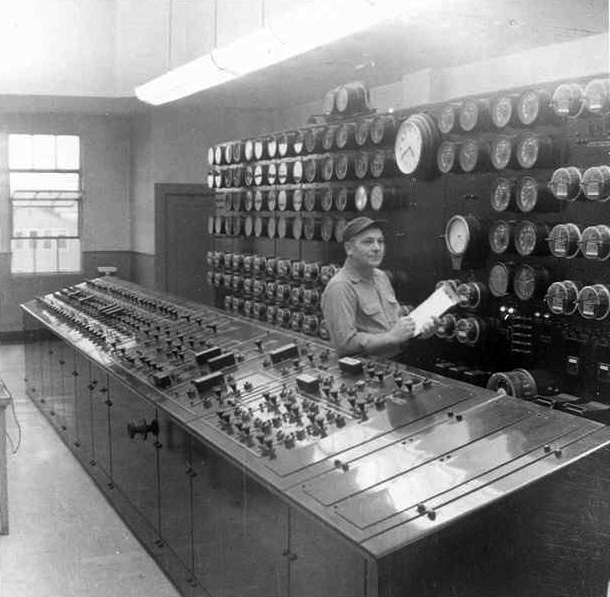 |
|
| (1959)^^ - View shows the Operator, again taking reads, this time probably reading the KWH meters (located on the meter board, in large round glass cases, one of which is partially visible behind the control board). There was a KWH meter for each bank and one for the Station Service. The transformer banks and each feeder were read and recorded hourly. |
Historical Notes The Operators were primarily responsible for the routine and emergency operation of the station’s equipment. The most important duties involved testing circuits after they had “relayed” (their circuit breakers opened by operation of protective relays to clear a fault in the field). They might also have to respond to trouble involving equipment in the station to restore power or avoid damage to the equipment. |
 |
|
| (ca. 1920s)* - Distribution Station No. 3 - Harbor Boulevard and Regan Street, San Pedro |
Historical Notes Distributing Stations transfer power from the transmission system to the distribution system for a specific service area. It is uneconomical to directly connect electricity customers to the main transmission network, unless they use large amounts of power. Therefore the distribution station reduces voltage to a value suitable for local distribution. In addition to transforming voltage, the substations regulate voltage which ensures a smoother level of power as seen by the customer. |
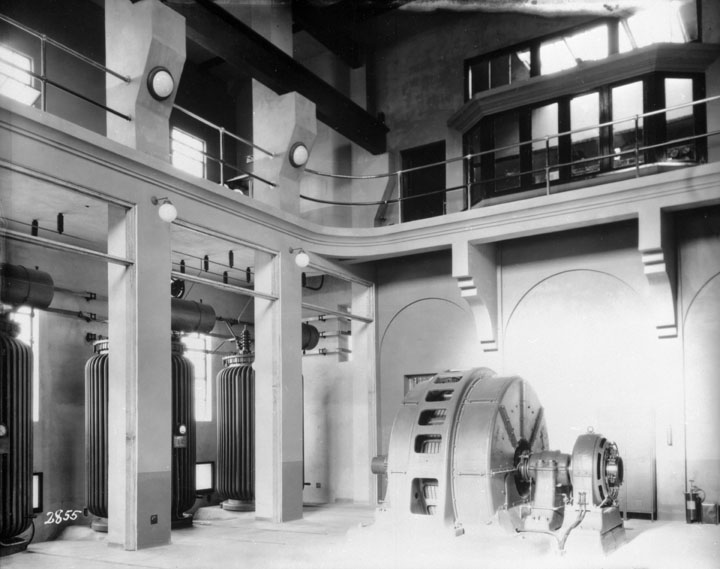 |
|
| (ca. 1920s)* - Interior view of DS-3 showing station transformers (left) synchronous condenser (right). |
Historical Notes A synchronous condenser (sometimes called a synchronous capacitor or synchronous compensator) is a device identical to a synchronous motor, whose shaft is not connected to anything but spins freely. Its purpose is not to convert electric power to mechanical power or vice versa, but to adjust conditions on the electric power transmission grid. Its field is controlled by a voltage regulator to either generate or absorb reactive power as needed to adjust the grid's voltage, or to improve power factor.*^ |
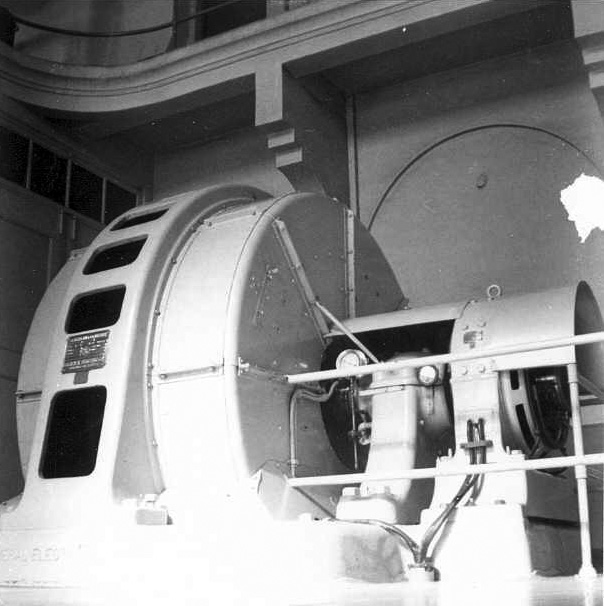 |
|
| (1959)^^ - Close-up view of the 4.8-kV 5000 KVA Synchronous Condenser at DS-3. |
Historical Notes The use of rotating synchronous condensers was common through the 1950s. They remain an alternative (or a supplement) to capacitors for power factor correction because of problems that have been experienced with harmonics causing capacitor overheating and catastrophic failures. Synchronous condensers are also useful for supporting voltage levels.*^ |
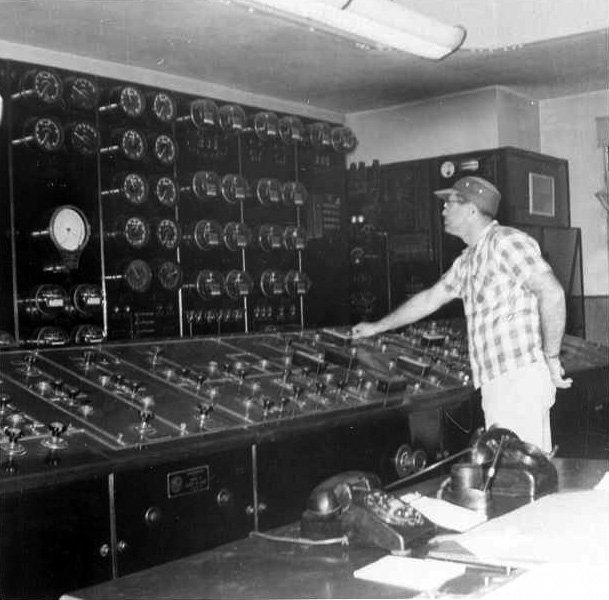 |
|
| (1959)^^ - Operator doing some 34.5-kV switching. Note that he has one hand behind his back while switching; a sure sign of an old school Operator. |
Historical Notes Many stations had manually controlled streetlight circuits that had to be turned on and off according to a schedule. Transformer temperatures were monitored for signs of overheating as were synchronous condensers and converters in the stations where they were installed. They also monitored and recorded the load on the transformer banks 34.5-kV circuits and 4.8-kV feeders and kept their portion of the station clean and neat. |
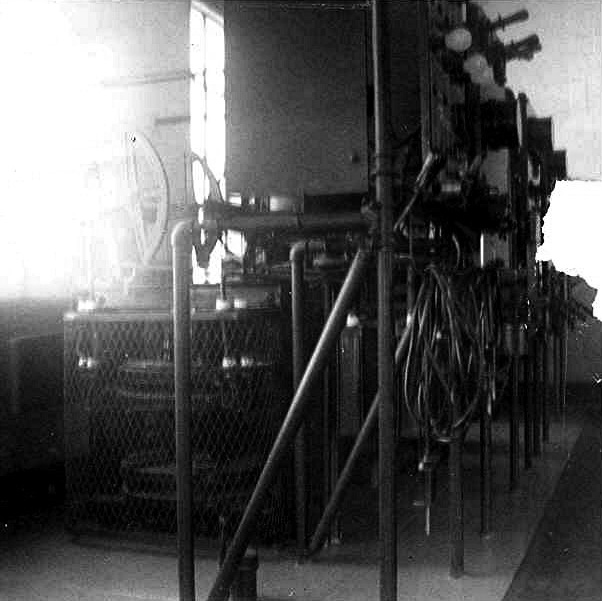 |
|
| (1959)^^ - View showing the Streetlight Transformers or “tubs”. The actual transformer is enclosed in the wire cage behind the control panel. |
Historical Notes The streetlight equipment was on the balcony at DS-3; in most stations it was in the basement. Closest is the Streetlight Test Panel, beyond that are the streetlight transformers, usually called "tubs." |
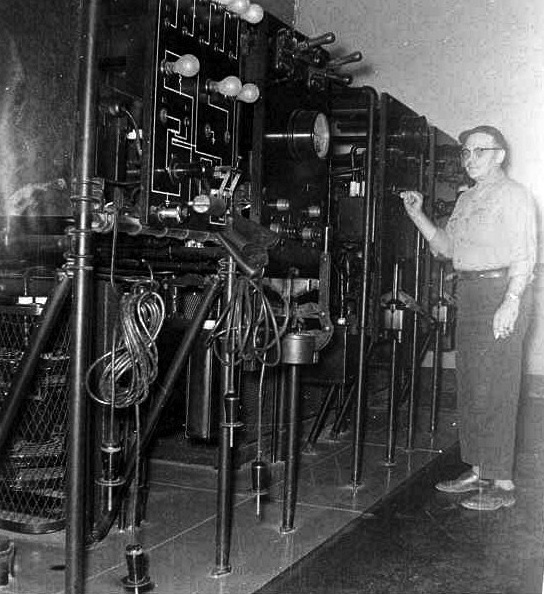 |
|
| (1959)^^ - View showing the Operator with his hand on one of the line switches to the streetlight equipment. |
Historical Notes Series streetlights were often troublesome and in attended stations, each circuit was tested twice a day, once at noon and again before streetlight on time. |
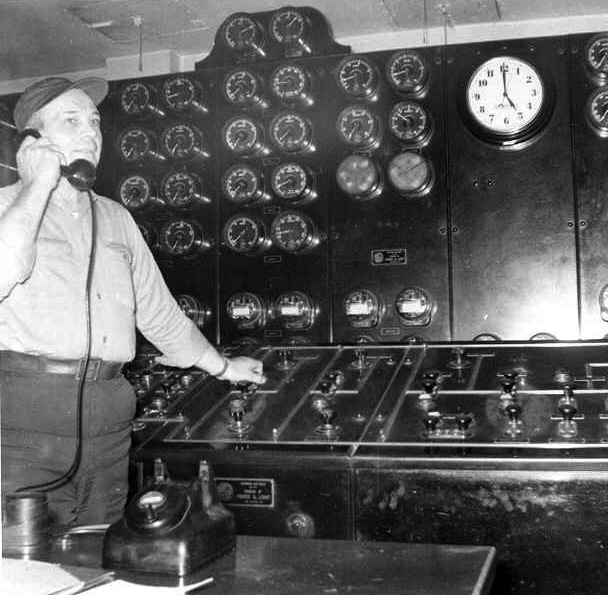 |
|
| (1959)^^ - Photo shows the Operator putting the streetlights on. Most attended stations were the power source for manually controlled series streetlight circuits. |
Historical Notes On the PM shift one of the first things to do after coming on shift was to check the Streetlight Schedule to determine the time they were to be turned on. At "streetlight on time" the Operator would close the circuit breaker to energize the Streetlight Bus and then call the Load Dispatcher to report them on. Due to the number of calls the Load Dispatcher would be receiving, all at the same time, the conversation was very abbreviated: the Operator would report "On at 3" and the Dispatcher would acknowledge "3 on" and go on to his next call. |
 |
|
| (1959)^^ - Photo shows the Operator relaxing at the desk at DS-3 after all the switching is complete. |
Historical Notes When the majority of stations were attended, manpower requirements were significant; into the early 1950’s there were over 1000 DWP Power House and Station Operators (as they were then known) working in Receiving and Distributing Stations and hydro power plants. Operators began their careers as Assistant Operators, assisting with the work in the larger stations and learning the trade. They could then take the Civil Service exam to be promoted to Operator. As an Operator, they would usually start off working by themselves in a small larger Distributing Station. As their seniority accumulated, they could bid shifts in the larger stations. The top of the seniority ladder in a Distributing Station was the Senior Operator, who worked the weekday day shift and, as a lead worker, was two pay grades higher than the other Operators. |
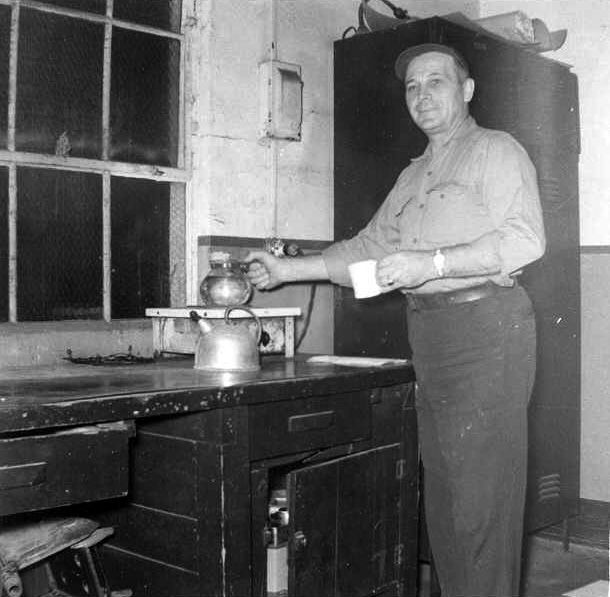 |
|
| (1959)^^ - View showing Operator Robert J. "Bob" Luden making coffee near the end of his shift. In most stations, one of the duties near the end of each shift was to make a fresh pot of coffee for the oncoming shift. |
Historical Notes The attended Distributing Stations were converted to supervisory control, beginning in the early 1950’s, with the last one going on supervisory control in the 1980’s. Today they are all controlled by Remote Terminal Units from the Energy Control Center.^^ |
Click HERE to see more in Early Power Distribution Stations |
References and Credits
* DWP - LA Public Library Image Archive
^^DWP - Water and Power Associates Historical Archives - Courtesy of Rex Atwell
< Back
Menu
- Home
- Mission
- Museum
- Mulholland Service Award
- Major Efforts
- Board Officers and Directors
- Positions on Owens Valley and the City of Los Angeles Issues
- Legislative Positions on
Water Issues
- Legislative Positions on
Energy Issues
- Recent Newsletters
- Historical Op Ed Pieces
- Membership
- Contact Us
- Search Index